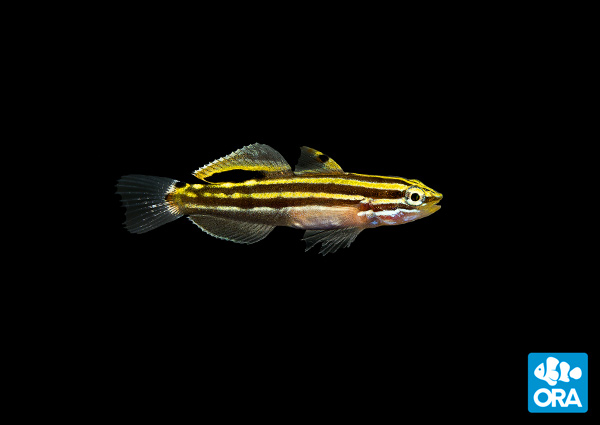Tuesday, ORA announced their latest in-house accomplishment, the successful spawning and rearing of the Hector’s Goby, Koumansetta hectori. Ask yourself, when was the last time you’ve seen a captive-bred Hector’s Goby? You haven’t. But is this a species first?
ORA believes it is, and they don’t make that claim lightly. Publicly, ORA’s blog notes that “C-Quest in Puerto Rico is reported to have raised the closely related Rainford’s Goby in the late 1990s but we believe that this was the first time the Hector’s Goby has been raised.” But that’s not the whole story, as the Hector’s Goby has been on the captive-bred list published by CORAL Magazine since the first iteration in late 2012, which would suggest ORA wasn’t the first. So who’s right?
ORA certainly didn’t claim this as a species first for ORA without doing their homework. Privately, in late October, Dustin Dorton and I had a few email conversations about this species and the related Rainford’s Goby. References were scrounged by several people, including long standing information pointing back to a survey conducted by Martin A. Moe, Jr., the grandfather of marine fish breeding. That survey claimed that K. rainfordi, known at the time as Amblygobius rainfordi, was being cultivated. That loose definition may or may not have been valid.
Given that it was just a single response at the time, and that Moe didn’t have any easy way to find out who submitted it to get clarification, it was fair to say that it may not have represented a report of Rainford’s Goby being successfully spawned and reared in captivity. The citation from C-Quest, as uncovered by ORA with the help of Frank Baensch, adds some validity to the claim for that species. Furthermore, that claim has supported by a former C-Quest employee.
Of course, Rainford’s Goby had been on the “captive-bred” list from Inland Aquatics for 12 years, but then what of Hector’s Goby?

Every search we conducted turned up nothing. All the old lists we are aware of never list K. hectori as having been a captive-bred species. Yet it somehow made it onto the Marine Breeding Initiative’s list (the basis for the CORAL Magazine list), without a reference or source.
Did we simply make a mistake when compiling that list? Did we simply assume K. hectori had been breed because its relative had? The closest breeding information I’ve been able to find is a Hector’s Goby spawn and hatch report from 2011; certainly not a successful breeding project.
The Marine Breeding Initiative has a “species first” award, meant to recognize the first time a participating breeder has accomplished a species that had never been done before. Part of the qualification and effort in applying for that award includes researching to find any possible prior successes.
In the case of K. hectori, its existence on our list without reference and no additional information to be found, would probably weigh strongly in favor of recognizing an accomplishment like ORA’s as a valid species first. Will we ever know for sure? Perhaps not, and we suspect the final word is perhaps not written yet.
Does it matter who was first? I say it does; being first, and the recognition that comes with that, is one of the best motivating factors out there to go try new things vs. rehash the same things over and over.Regardless of whether ORA was “first” or “second”, the one thing I can say is that with ORA’s announcement today, it is clear that K. hectori is now firmly off the table as being an eligible species for a “species first award” should anyone be looking to claim that recognition as their own. THAT in itself, is another feather in the cap for captive breeding.
Regardless of the “first”, ORA has suggested it will be a while before we see any available captive-bred Hector’s Goby, if ever. With an extremely long time to settlement, around 60 days, the chances for things to fall apart are greater than a fish which settles out at 8-9 days post hatch. ORA has a lot of refining to do if the process of rearing this species is ever going to see the intersection of production costs and what reef hobbyists are willing to pay for the species.



